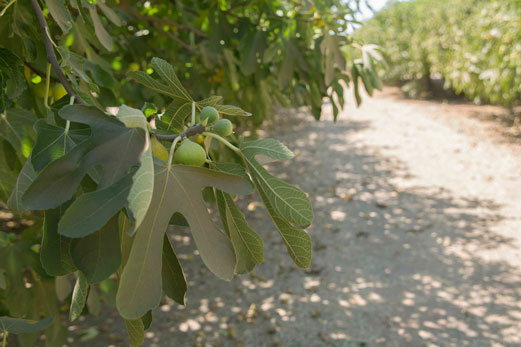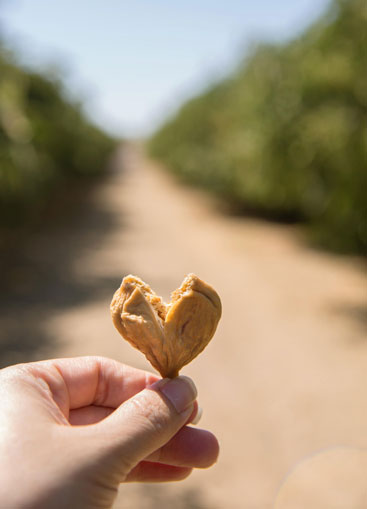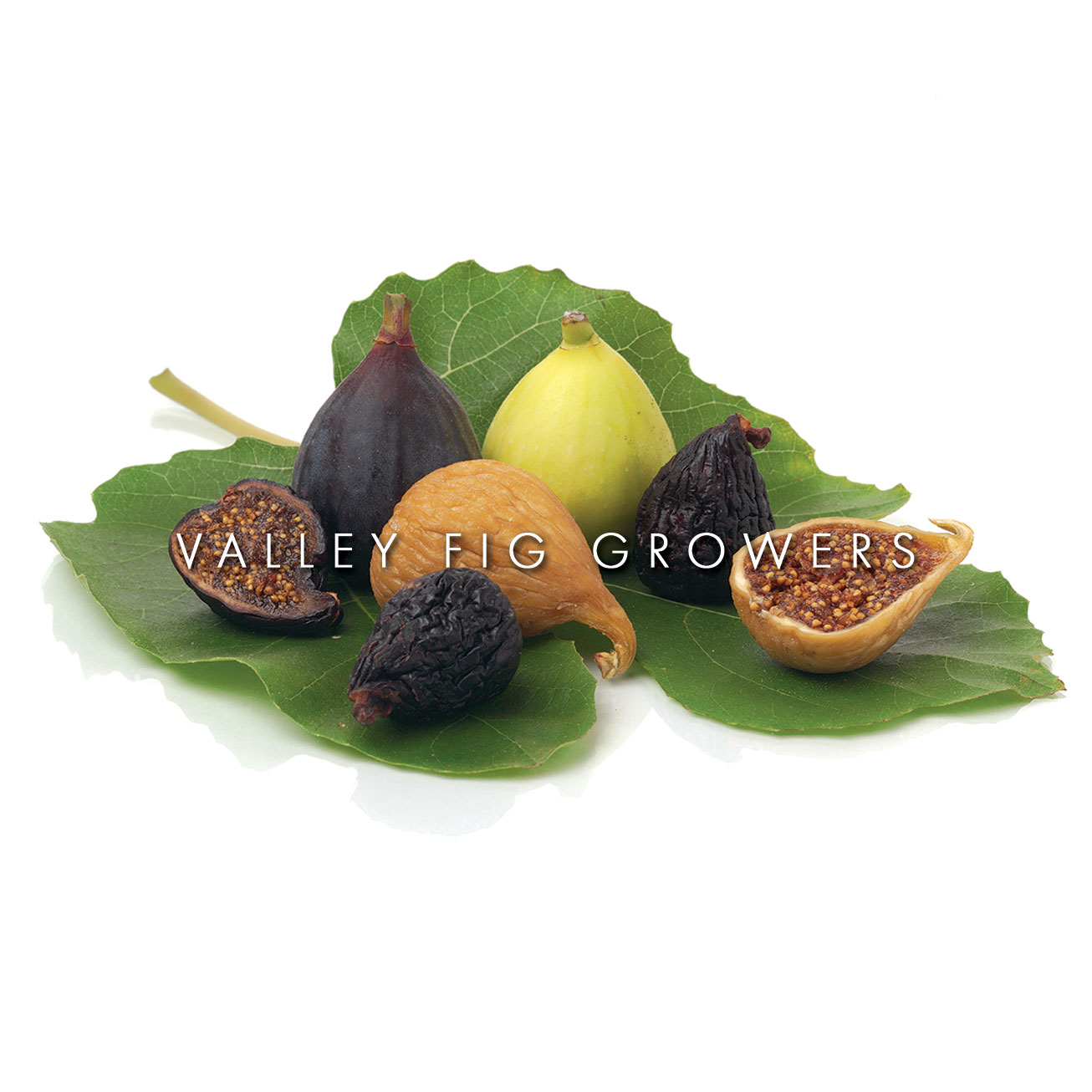Fascinating Fig Facts
 Fig trees have no blossoms on their branches. The blossom is inside of the fruit! Many tiny flowers produce the crunchy little edible seeds that give figs their unique texture.
Fig trees have no blossoms on their branches. The blossom is inside of the fruit! Many tiny flowers produce the crunchy little edible seeds that give figs their unique texture.- Figs are harvested according to nature’s clock, fully ripened and partially dried on the tree.
- Figs naturally help hold in moisture in baked goods, keeping them fresher.
- Fig puree can be used to replace fat in baked goods.
- California grows many varieties of figs, but the two most common are the amber-colored, slightly nutty-flavored Golden and the dark purple, sweet Mission.
- California produces 100% of the nation’s dried figs and 98% of the fresh figs.
- The Spaniards introduced Mission Figs to the California territory in the early 16th century.
- The priests at Mission San Diego originally planted figs in California in 1769. This is how the dark purple fig became known as “Mission.”
 Many believe it was figs that were actually the fruit in the Garden of Eden with Adam and Eve, not apples.
Many believe it was figs that were actually the fruit in the Garden of Eden with Adam and Eve, not apples.- The early Olympic athletes used figs as a training food. Figs were also presented as laurels to the winners, becoming the first Olympic “medal.”
- In Roman times figs were considered to be restorative. They were believed to increase the strength of young people, to maintain the elderly in better health and to make them look younger with fewer wrinkles. –Pliny (52-113 AD).
- Figs made their first commercial product appearance with the 1892 introduction of Fig Newtons® cookies.
- The fig tree is a symbol of abundance, fertility and sweetness.
- Eating one half cup of figs has as much calcium as drinking one-half cup of milk.
- Ounce for ounce, figs have more fiber than prunes and more potassium than bananas.





